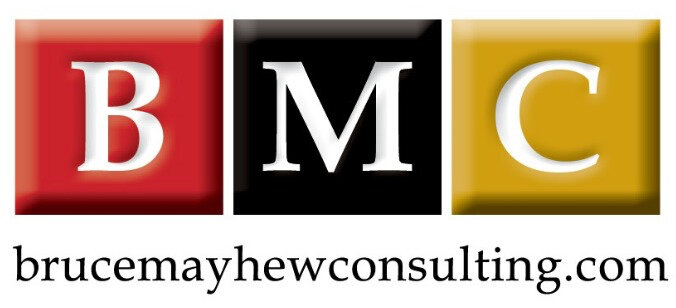"Treat Your Staff How You Would Like to Be Treated", Sir Richard Branson. I Don't Quite Agree
/Let’s cut to the chase.
Many people have written about challenges with Sir Richard Branson’s quote “There’s no magic formula for great company culture. The key is just to treat your staff how you would like to be treated”. While there are aspects of this statement that are not perfect, there is a viewpoint I believe makes sense and so I choose to give Sir Richard the benefit of the doubt. Let me share my dual position.
When it comes to creating a company or team culture, it is imperative to have corporate qualities / values like safety (physical and mental), honesty, equality, and to trust in your employer and the people you work with. So, Sir Richard is correct. These core corporate qualities / values (which are often referred to as Herzberg's Motivators) are vital to having a healthy, vibrant culture that attracts, inspires, and keeps terrific talent. A company or team culture like this helps us feel a sense of belonging where we can count on others and be our best – together.
But when we get beyond the core cultural traits that drive employee satisfaction, this is where I believe Sir Richard Branson’s quote doesn’t work. To explain what I mean, I believe it’s important to first share a high-level overview of each of the four generations in the workforce today from my Generations at Work Training.
Boomers are loyal by nature. They grew up in an era where work was hierarchical. Promotions were seen as win-lose competitions, and you had to work hard to get ahead. One-income families where the norm. Boomers are currently between 60 – 78 years old (in 2024) with many being retired but their leadership style continues to have an influence on their successors.
Gen Xers saw the birth of the computer when they were young. Women began enjoying careers in the workforce in greater numbers giving families two incomes. It became more common for Gen X youth to vacation globally and they popularized Work Life Balance. They are between ages 45 – 59 and are often in leadership positions with the most senior often in the C-suite / most senior positions.
Millennials grew up with computers on every desk. In their teens they embraced the birth of smartphones, in-their-palm entertainment, and social media. They often traveled more than Gen Xers and their parents prioritised their education and organized recreational team experiences. They are between ages 29 – 44, eager to get ahead. Many are relatively new in their leadership positions and may feel conflicted as they reconcile leadership habits they learned from their Boomer parents and mentors.
Gen Z have never known a world without smartphones, tablets, and laptop computers. On-demand knowledge, entertainment and 24/7 connectivity has always been in their palm. They are often highly educated and communicate more through apps and less through in-person conversations than any previous generation. They are between ages 14 – 28, just entering the job market and are eager to learn, find their place and expect an opportunity to prove themselves.
With that information in mind, I ask you to imagine you lead two people, a Gen Z who is 25-years old and a Gen X who is 52-years old. Now, I ask you to consider what stage they are at in their career and their unique experiences. What might their goals be? As they grew up, how were they rewarded and how often? How is this different from each other? How is this different from you? How has technology and the ability to work anywhere / anytime changed from one generation to the other. How do they instinctively communicate? Who are / were their influencers / mentors? Given these questions and others you may think of what are their similarities and equally important, their differences? What might be their personal preferences and aspirations. And then, take a moment to create a mental list of why it would not work to treat them how you would like to be treated?
I hope you are seeing the important differences. Let me share some of my insights and experience.
Why Treating Your Staff How You Would Like To Be Treated Doesn’t Work
As each generation ages and experiences ever-expanding options and freedoms first-hand, the more they see themselves as unique and want to be involved in the choices that impact their uniqueness.
In today’s culture, those choices include when and where they work. In addition, younger generations grew up with their parents and teachers asking for their input into decisions and sharing virtually every detail why something is the way it is. So, wanting to know ‘why?’ is second nature to Millennials and Gen Z. Simon Sinek wrote a whole book about the importance of why. And yes, it sometimes feels strange (and exhausting) to some Boomers to be expected to explain every detail – especially since they didn’t feel it was their place to ask so many questions when they were new in their career. And that’s just the tip of the iceberg about the different expectations employees have and why treating everyone the same is a challenge.
For example, it may be:
One employee is comfortable with positive feedback being given to them in public (their preference) and another is not. Many people are not comfortable with public praise.
One employee is happy to be given opportunities to travel to conferences or have out-of-town meetings at a client’s offices (their preference) and another doesn’t want to travel and leave their family.
One employee wants more responsibility and a promotion (their preference and commitment to continuous learning) while another is very comfortable with their level of responsibility and current position, especially since it allows them to work remotely almost exclusively.
If you’ll humour me, please let me share one more example that is often relevant in today’s workplaces.
For most Millennials and Gen Z, feedback is a good thing, and they want it often, even if you think their excellent work is obvious. Many Baby Boomers and Gen X managers grew up thinking that 'no feedback is good feedback.' Today, as a leader, if you are unsure about frequency or detail, ask your employee or co-worker. I have a friend whose Gen Z daughter is quite literally worried about her work and work quality. She is so worried she has shared the following concern with her mom, “I have no idea how I’m doing because my boss doesn’t tell me.” In this case my friend’s daughter likely has a leader who is a Gen X or Boomer who is quite happy with her performance. The sad part is that I believe that when an employee (especially a young employee who is new to a workspace) doesn’t know how well they are doing, then that employee likely has energy and potential that is not used because they don’t know what their boss wants.
What Does Work
If you are getting the idea that inspiring every employee can be a zero-cost solution that has nothing to do with salary or bonuses, then you are right. And while it takes a bit more effort at first to treat your people the way they want to be treated, I believe that in the long run you actually spend less time managing people because they know what they should be doing, they are proud of their accomplishments, and they are giving you 100% instead of 75%.
As a leader (or perhaps a future leader), I invite you to reflect on the idea that one of the most important jobs of a leader isn’t to do all the work, it isn’t to control, and it isn’t to make every decision. Leadership is learning how to build people up, share a vision and a purpose, support them well, and help them be their best. Leadership is a privilege and skill that develops over time, just like being a great accountant, pilot, or machinist. John F. Kennedy is quoted saying, “Leadership and learning are indispensable to each other.”
I hope you are getting a sense of how the best leaders help others feel safe, manage expectations, communicate with clarity, create a sense of belonging and inspire greatness. Leading, giving instructing and giving feedback the way you prefer will feel right for you, but it may be opposite to how someone else needs to feel inspired and be a proud, productive, and loyal person individual.
And sure, we can’t treat everyone 100% exactly how they want to be treated every minute (fairness, equality and respect only work when they’re a two-way street). We all must face that work is work. But, when we can share trust, respect and are transparent with the people around us that honours their uniqueness, we should. We all have wiggle room. The more we trust the more wiggle room we have.
Let me share another quote. This time by Jim Rohn, an American entrepreneur, author, and motivational speaker. “A good objective of leadership is to help those who are doing poorly to do well and to help those who are doing well to do even better.”
As an executive coach and leadership development keynote speaker / trainer, I have never met two people who have the same needs, wants, aspirations and recognition styles. Even identical twins are different in their needs, wants and motivators as they mature. The most inspirational and successful leaders I’ve worked with understand that to unlock each person and their own potential, they need to see everyone on their team and all of their suppliers or buyers are unique individuals.
The best teams include people who are different; people who have strengths that complement each other and who respectfully challenge and learn from each other without ego. And if we embrace this, we must also accept different people also need to be rewarded differently. So why treat everyone the same or how you want to be treated?
Conclusion
Circling back to Sir Richard Branson, I don’t want to put words in his mouth, but what I get from Sir. Richard’s quote is him saying is, “Stand with, stand behind and stand up for your people.”
To be a good leader you should do you best to understand your people. You should understand what is important for them, and why it is important. Only when you know them and how they want to be treated can you make your best effort to treat them that way. If you do that, your team will know that you care, they will care back, they will be flexible and have wiggle room in what they want / need, and they will feel they belong with you and at your company. You should also know what their life ambitions are and help them to reach these.
And now let me finish by give you a real Sir Richard Branson quote that I quite like, “It is fascinating what people achieve when their perception of what is possible alters.”
Thank you for spending time with me today and reading ‘Treat Your Staff How You Wold Like to Be Treated.’
Bruce
Learn More About Bruce Mayhew
Toronto corporate trainer and executive coach Bruce Mayhew Consulting is in the people business… it just so happens that training and/or executive coaching is involved. Let us help you improve your productivity and employee engagement.
To learn more about how leadership training can to improve your skills call us at 416.617.0462.
Bruce Mayhew Consulting's most popular programs are Email Etiquette Training, Difficult Conversations, Generational Differences, Leadership Skills Training and Time Management Training
Related Workshops That Drive Business Success
Toronto based corporate trainer and executive coach Bruce Mayhew Consulting proudly offers leadership training and professional development.





